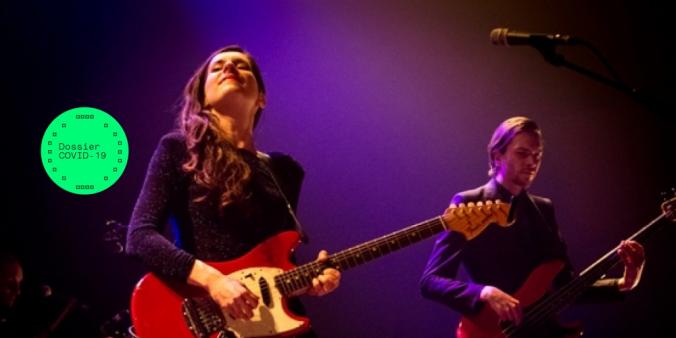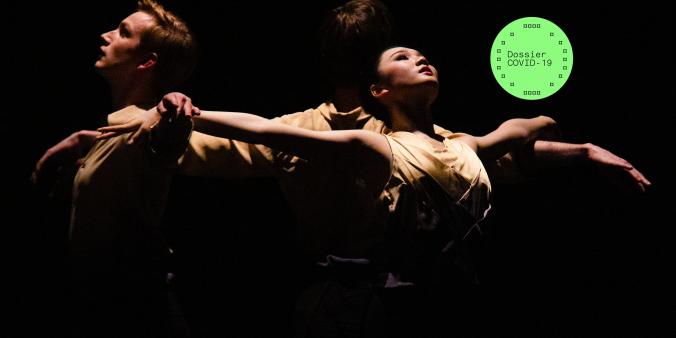Each year, DutchCulture tracks the international events that Dutch artists and cultural organizations produce and take part in abroad. This helps us understand the cultural impact of the Netherlands in other countries. This mapping provides an overview of the scope, scale, and characteristics of the Dutch International cultural presence.
COVID-19 has massively reshaped international cultural exchange. Faced with travel bans and gathering size restrictions, artists have had to rethink what is possible in order to share their work internationally. This year’s mapping examines the impact of the pandemic on Dutch international cultural activity, assesses barriers to cultural exchange in this new environment, and identifies some of the trending solutions to these barriers.
Mapping Dutch cultural participation
Throughout 2020, we tracked Dutch participation in 8,883 international cultural activities. These activities were spread across 90 countries, in 1,600 cities across the globe. 2,305 Dutch artists and cultural organizations from all artistic disciplines participated in these events. Activities took place on six continents, and the Europe continues to be a key location for activities, with 4,854 activities (52%) taking place within the EU.

In 2020, we tracked the participation of 2,305 Dutch artists in international cultural activities. Artists from every province and every artistic discipline were internationally active. Music continues to dominate as a discipline, however, it accounted for 40% of activities compared with 50% last year, in large part due to the cancellation of many international music festivals and concerts.
Festivals continue to play a key role in attracting Dutch artists to international locations. Major metropolitan areas also continue to be focal points for Dutch international cultural activities, with New York, Antwerp, Berlin, Moscow, and Tokyo taking the top spots.

International culture and the impact of COVID-19
We tracked a 72% reduction in international cultural activities in 2020, due to the corona pandemic. This is a result of events being cancelled/postponed, activities not being planned in the first place, as well as a lack of reporting capacity from our partners at embassies, cultural funds and arts organizations. This is a stark reminder that artists need support in order to bridge the gap between the pre-and post-pandemic art worlds.
Roughly 20% of activities in 2020 were online. The timeline below shows that immediately as the pandemic hit artists and cultural organizations adapted by moving activities online. By April 2020, online activities surpassed in-person activities and continue to rise steadily. Both online and in-person activities drop sharply in December 2020, likely due to a combination of the second wave of the pandemic as well as the slow-down of winter holidays.

A broad range of online activity formats has arisen over the past year with videos and live streams being two hugely important formats for the arts. The websites of partner organizations were a key platform for artists, along with more general platforms such as Facebook and Zoom. Sites of Dutch cultural organizations themselves were also key platforms. This highlights the importance of access to good digital infrastructure for artists livelihoods and the ability to communicate to audiences internationally.
Not all disciplines were equally able to adapt to online formats. Only 15% of music activities were online, and only 16% of performing arts activities. On the other hand, audiovisual media was able to adapt much more readily and, as a result, 68% of audiovisual media activities were online in 2020.

Finding resilience
Without hesitation, artists and cultural organizations launched new corona-proof initiatives. These included socially distanced concerts, online screenings and festivals, and virtual exhibitions and tours, among many other formats. These innovations opened doors that had previously been closed and many of these new formats offered surprising benefits. Artists from every discipline were able to create new forms of activities that embrace, combine and re-invent online formats. Artists created interactive performances and developed virtual platforms that provide audiences rounded experiences even from home.

Capturing new audiences
One of the main benefits of bringing activities online is that Dutch artists were able to reach international audiences that would be otherwise unable to attend. The majority of film festivals, for example, were moved online and are now available to audiences around the world, rather than the limited number of physical visitors who normally attend.
Bringing international audiences into Dutch venues
Another benefit of bringing activities online is that Dutch organizations are able to bring international audiences into their own venues. Nearly 300 of the online activities that we tracked were internationally oriented activities that took place on the websites of the Dutch artists and organizations them- selves. In this way, international audiences are brought into the realm of the Dutch artist and organization ‘at home’.
Providing mental and emotional sustenance
Perhaps most importantly, Dutch artists and cultural organizations create concerts, performances, exhibitions, publications, lectures and a myriad of other activities that offer mental and emotional sustenance to audiences around the world at a time when physical gatherings cannot take place.

Providing a substitute
Finally, it is important to remember that even in cases where the full experience cannot be captured, these activities created by Dutch artists provide a substitute that offers audiences a chance to enjoy arts and culture when it would otherwise not be possible.
Supporting resilience
There are nevertheless a number of barriers that need to be overcome in order for artists to create new and resilient initiatives. First and foremost, for a majority of artists, neither online activities nor physically distanced activities are financially viable. Financial support and support for methods that allow monetization of online activities must therefore be available for artists and cultural organizations if this model is to continue.
Second, digital infrastructure plays a key role in the production of content for online audiences, particularly for larger cultural organizations. While there is external infrastructure (such as Face- book or Zoom) in place that is being used- particularly for larger cultural organizations, the quality of cultural organizations websites, the ability to record quality audio and video, and access to the expertise needed to create new virtual formats is crucial to making the online model viable.Finally, a collaboration between Dutch and international artists and arts organizations requires extensive coordination and planning and artists need structural support in order to undertake this work. Dutch artists have been at the forefront of the shift towards new forms of activities and providing support for artists to overcome these barriers will most certainly result in a continued increase in these new forms of resilient
Disclaimer
Many activities in 2020 were never tracked due to cancellations, postponements and capacity shortages at embassies, cultural funds, and arts organizations. Please take this into consideration when reviewing the data in this report.










